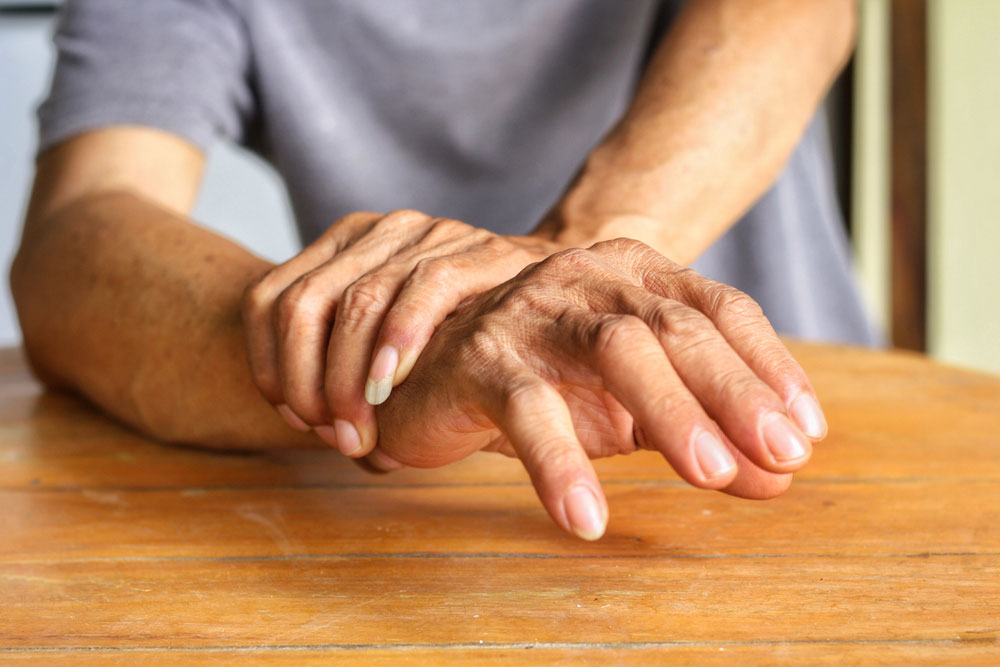What Is Tremors ?
A tremor is a rhythmic shaking movement in one or more parts of your body. It is involuntary, meaning that you cannot control it. This shaking happens because of muscle contractions.
A tremor is most often in your hands, but it could also affect your arms, head, vocal cords, trunk, and legs. It may come and go, or it may be constant. Tremor can happen on its own or be caused by another disorder.
Tremors can occur in any part of the body and at any time. They’re usually the result of a problem in the cerebellum, the part of your brain that controls muscular movement.

What are the types of tremors?
There are several types of tremor, including:
- Essential tremor, sometimes called benign essential tremor. This is the most common type. It usually affects your hands, but it can also affect your head, voice, tongue, legs, and trunk.
- Dystonic tremor, which happens in people who have dystonia. Dystonia is a movement disorder in which you have involuntary muscle contractions. The contractions cause you to have twisting and repetitive movements. It can affect any muscle in the body.
What are the symptoms of tremor?
Symptoms of tremor may include:
- Rhythmic shaking in the hands, arms, head, legs, or torso
- Shaky voice
- Difficulty writing or drawing
- Problems holding and controlling utensils, such as a spoon
- Begin gradually, usually more prominently on one side of the body
- Worsen with movement
- Usually occur in the hands first, affecting one hand or both hands
- Can include a “yes-yes” or “no-no” motion of the head
- May be aggravated by emotional stress, fatigue, caffeine or temperature extremes
Causes
General causes of tremors include:
muscle fatigue
- ingesting too much caffeine
- low blood sugar levels
- stress
- aging
- injuries
- prescription medications
Investigation
Diagnosing essential tremor involves reviewing your medical history, family history and symptoms and conducting a physical examination. There are no medical tests to diagnose essential tremor. Diagnosing it is often a matter of ruling out other conditions that could be causing your symptoms.
Neurological examination: In a neurological examination, your doctor tests your nervous system functioning, including checking your Tendon reflexes, Muscle strength and tone, Ability to feel certain sensations, Posture and coordination, Gait
Laboratory tests: Your blood and urine may be tested for several factors, including Thyroid disease, Metabolic problems, Drug side effects, Levels of chemicals that may cause tremor
Performance tests: To evaluate the tremor itself, your doctor may ask you to Drink from a glass, Hold your arms outstretched, Write, Draw a spiral
Treatment
If you get treatment for the underlying condition causing the tremor, that may be enough to cure the tremor. Possible treatments include:
Medications:
1. Beta-blockers are typically used to treat high blood pressure or heart disease. They’ve also been shown to reduce tremors in some people.
2. Tranquilizers such as alprazolam (Xanax) may relieve tremors that are triggered by anxiety.
3. Antiseizure medications are sometimes prescribed for people who can’t take beta-blockers or who have tremors that aren’t helped by beta-blockers.
Botox Injection:
These chemical injections are often given to people who have tremors that affect the face and head. However, Botox can be injected into virtually any muscle group that contributes to tremors, such as the neck, arms, or hands.
Physical therapy:
These chemical injections are often given to people who have tremors that affect the face and head. However, Botox can be injected into virtually any muscle group that contributes to tremors, such as the neck, arms, or hands.
Deep brain stimulation (DBS):
Deep brain stimulation (DBS) may be the only option for those with debilitating tremors. During this operation, the surgeon inserts an electrical probe into the portion of your brain responsible for the tremors.
